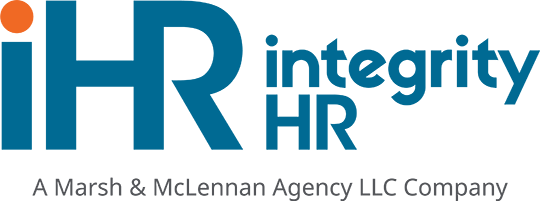You probably have a laundry list of New Year’s Resolutions for 2011 at home just waiting to be tackled, but things like – eat better, have more fun, meet more people, get in shape, or whatever your flavor may be, won’t go a long way at helping your company be more successful.
So… what New Year’s Resolutions did you make for your company in 2011? If you didn’t make any, or if you’d like to add to your list, it’s not too late! It may be a little past the deadline, but if you promise to get them written down now, we won’t tell anyone.
Check out these 9 Important New Year’s Resolutions for the HR Professional and get a great start on your HR Department’s to-do list for 2011.
1. Make Sure Employees Get Feedback On A Regular Basis
Once-a-year evaluations are not enough, and some HR gurus even go so far as to say that yearly reviews alone are worthless. Instead, employees should receive regular input from their supervisors. These discussions should typically focus on day-to-day performance objectives rather than on past mistakes or failures.
This approach requires supervisors to observe and evaluate their employees regularly and to work closely with targeted individuals, as needed. In addition, make sure your managers give positive feedback for a job well done.
2. Terminate Poorly Performing Or Disruptive Employees
This advice is an obvious companion to the first suggestion. However, many managers are unwilling to terminate an employee even when the action is justified. The most common reason is the fear of being sued, but others include organizational inertia, fear of confrontation, and concern for the employee’s economic well being.
But, if you allow a poorly performing or disruptive employee to continue working, productivity and efficiency will suffer and discontent will spread. You can help limit the possibility of legal claims and make yourself more comfortable with taking decisive action by following your normal disciplinary process before you terminate. For most employers this process includes:
- Giving notice to the employee of the specific performance problems and the consequences of not improving
- Establishing goals for improvement
- Setting a reasonable time frame for meeting the goals (normally two weeks to 30 days)
- Following up to see if there is improvement
- Terminating the employee if the goals have not been met
3. Pay Overtime, Even When You Do Not Think It Was Properly Authorized
One of the surest ways to provoke a wage and hour claim is not to pay employees properly for overtime they have worked. According to Department of Labor (DOL) regulations, if you are aware that an employee is working more time than is scheduled, you must compensate the employee, even if you did not specifically request the additional work.
For example, if your policy requiring prior authorization for overtime work was not followed but a manager was aware the employee performed the work, you should pay for the overtime. Similarly, do not allow employees to work “off-the-clock,” for example after clocking out or during normally scheduled meal breaks.
You can, and should, however, discipline the employee (and manager) under your normal disciplinary procedures for violating your work rule prohibiting unauthorized overtime.
4. Make Sure Your Exempt Employees Are Really Supposed to Be Exempt
Over the last few years, the Fair Labor Standards Act (FLSA) exemptions have been the subject of several high-profile overtime cases, often involving employees who were managers in name only or administrative employees who performed primarily non-exempt job duties.
Wal-Mart, Starbucks, RadioShack, Abercrombie & Fitch, and Family Dollar stores all have been targeted by class action suits alleging employees were improperly classified as exempt and seeking millions of dollars in unpaid overtime.
To ensure that your organization is not the next target of a multi-million dollar lawsuit or settlement, you should review the job duties of your exempt employees to make sure they are properly classified. In particular, make sure that their primary duties meet exemption requirements and that they are not spending too much time doing nonexempt work.
5. Review Your Independent Contractor Classifications
Independent contractor classifications are another area that puts employers at risk. As a general rule, if you exercise too much control over the way a worker performs his job, the worker likely is an employee and not an independent contractor.
The Internal Revenue Service (IRS) has collected millions in back taxes and penalties from employers who improperly classified employees as independent contractors. And, the IRS is not the only agency that will be after you.
State labor, revenue, and unemployment compensation agencies have their own definitions of independent contractor, as does the federal Department of Labor and the National Labor Relations Board. As an example, Federal Express has spent the last several years fighting multiple state and federal lawsuits challenging its classification of home delivery drivers as independent contractors.
These suits allege violations of the National Labor Relations Act, Family and Medical Leave Act, and state unemployment and tax laws.
Therefore, you should make it a priority to examine your independent contractor classifications. A good starting point is to look at the IRS 20-factor test for classifying independent contractors.
6. Protect Against Retaliation Claims
Retaliation claims currently account for 36% of all claims filed with the Equal Employment Opportunity Commission (EEOC) (as of FY 2009, the latest year reported by the EEOC). And, these claims have been steadily increasing. In just over 12 years, retaliation claims have almost doubled, from 18,198 filed in 1997 (representing 22.6% of the EEOC’s total claims) to 33,613 in 2009 (36% of the total).
Employees and their attorneys regularly tack retaliation claims onto their legal filings as part of a strategy to raise the stakes for employers. And, it works. They have learned that they can often win the retaliation claims even when they lose the underlying discrimination claims.
So, make sure you take proactive steps now to limit the potential for retaliation claims in your workplace. These steps should include having a clear “no retaliation” policy, training managers on what retaliation is, reviewing all disciplinary actions before implementing them, and documenting disciplinary actions to show your nondiscriminatory reasons for them.
7. Consider Implementing Flexible Work Schedules
If you asked your employees, most would probably say that they would appreciate more flexibility in their schedules. Flexible work hours help employees meet caregiver responsibilities, avoid commuting headaches, and pursue personal interests.
In short, these schedules allow employees to balance their work and personal lives. A flextime schedule often appeals to women with young children, “sandwich generation” employees with elder care responsibilities, and older workers transitioning to retirement.
But, it is also a benefit that can be used by any employee who is looking for more control over the workday. Employers that have implemented these schedules generally report increased productivity, job satisfaction, and employee retention.
8. Safeguard Employee Personal Information
Data security, records privacy, and identity theft should be on every HR professional’s radar. The Privacy Rights Clearinghouse (the PRC, online at www.privacyrights.org) reports that over 500 million records containing personal identifying information have been exposed since 2005.
The data breaches were the result of incidents such as computer drives being stolen or lost, emails and regular mail sent mistakenly that contained personal information, and sophisticated and not-so-sophisticated computer hacker attacks. These events exposed Social Security numbers, credit card numbers, bank account information, drivers’ license numbers, and other personal information that could be used to steal a person’s identity.
Employers from many sectors have been in the news lately for losing employee and customer personal information. For example, the PRC reports that in December 2010, hackers accessed the personal information (including Social Security numbers, birth dates, and addresses) of 750,000 students, professors, and contractors at Ohio State University. And, in November 2009, a portable disk drive “disappeared” from HealthNet, a regional health plan based in Connecticut, potentially exposing the Social Security numbers, health information, and bank account numbers for 1.5 million customers.
Further, in May 2009, Aetna’s Web site was breached by a spam attack which compromised the Social Security numbers of 65,000 current and former employees contained in the site. These incidents are just the tip of the iceberg.
When data breaches or identity theft occur as a result of unauthorized access to employment records, it will hurt employee productivity, morale, and good will. In addition, you may be liable under negligence theories and some state laws for the resulting loss if you did not properly secure and dispose of the information.
Therefore, as the custodian of personal identifying information about your employees, you must guard against its unauthorized access and misuse in order both to protect workers from identity theft and your organization from liability.
For the New Year, increase employee productivity and decrease absenteeism. Offer your employees voluntary payroll-deductible legal service and identity theft protection benefits.
You can take several steps to safeguard paper and computer records to protect sensitive information in workplace files from improper access and use. These steps should include: limiting access to employee files, physically locking up files, installing and updating firewalls on computers, limiting use of social security numbers to identify employees, and properly destroying employment files once they are not needed.
In addition, you should perform background checks for all employees who will have access to sensitive personal information and then train them about their data security obligations.
9. Review Your HR Policies And Procedures
Clearly written policies that are regularly reviewed can be both an effective employee relations tool and a good defense against employee lawsuits. In contrast, policies that are out-of-date or improperly applied can have exactly the opposite effect.
So, make sure that your policies reflect any new laws, regulations, and court cases that affect either policy language or how you implement the policies. In the last two years, we have seen several new laws and regulations implemented, including the Genetic Information Nondiscrimination Act (GINA) statute and regulations, the ADA Amendments Act proposed regulations (final regulations still pending), and the Family and Medical Leave Act Amendments and new regulations.
Most experts suggest both a thorough review at least once a year and the use of a notification service or publication to keep you posted during the interim.
Of course, if you revise any of your policies, you should distribute and thoroughly explain the changes to all employees and obtain acknowledgements back from them.
———-
The preceding article was reprinted with permission from HR Matters E-Tips, copyright Personnel Policy Service, Inc., Louisville, KY, all rights reserved, the HR Policy and Employment Law Compliance Experts for over 30 years, 1-800-437-3735 . Personnel Policy Service markets group legal service benefits and publishes HR information products, including the free weekly electronic newsletter, HR Matters E-Tips (www.ppspublishers.com/hrmetips.htm). This article is not intended as legal advice. Readers are encouraged to seek appropriate legal or other professional advice.
———-
 HR Can Be Confusing. Download Our Free HR 101 Toolkit for the Small Business Now.
HR Can Be Confusing. Download Our Free HR 101 Toolkit for the Small Business Now.
Too many companies wait until they’ve gotten hit with heavy fines and costly lawsuits to get control of their Human Resources practices? If not done properly, this area of business can mean the end of an organization. Does HR have you scratching your head?
Use our HR 101 toolkit to quickly and easily assess your HR situation. Download and implement today.
—











